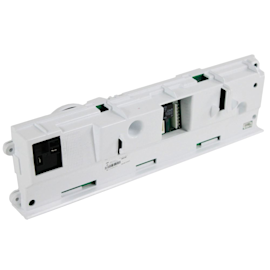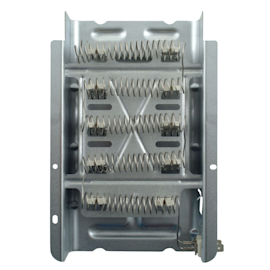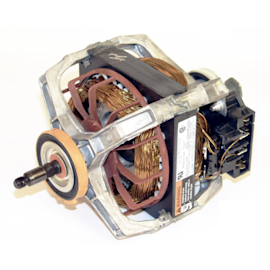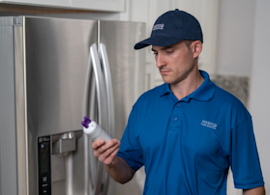How to clean your dryer


Check out our advice for cleaning your dryer to help it dry your clothes faster. We also give pointers about removing stains left by the things you forgot to take out of your pockets.
Remove lint from everywhere it collects
A full lint filter blocks the free flow of air, making your dryer less efficient. Clean the lint filter after every load, as well as the pocket that holds the filter.
Every 6 months or so, remove softener residue from the lint filter and then scrub both sides of the filter, using a nylon brush dipped in warm water. Rinse the filter in hot water and dry completely with a clean towel before reinstalling in the dryer.
A clogged vent hose makes the dryer work harder to dry a load and is a fire hazard, because lint can catch fire. At least once a year, unplug the dryer and clean the hose and vent hood on the outside wall. Check airflow outside at the vent hood to make sure there are no kinks in the vent hose.
Clean the moisture sensors
Most newer dryers have sensor bars that tell the dryer to shut off when the load is dry. If you use dryer sheets, residue from the sheet's fabric softener can make sensors think the load is dry when it's still damp. Clean the sensor bars every 6 months or so, or if the dryer is consistently under-drying the laundry. Dip the tip of a rag in rubbing alcohol and wipe the bars. Check the owner's manual for the location of the sensor bars.
Get rid of stains
The following methods are safe for getting rid of some of the most common dryer drum stains. After using any cleaning method, it's a good idea to place wet rags in the dryer and run at the highest heat setting until dry to remove any residue.
Transferred dye. The dye from new jeans can rub off on the dryer drum (not to mention your hands), leaving a blue or gray residue. To remove it, rub a paste made from powdered laundry detergent and very warm water on the stains. When the stains are gone, use a clean, damp cloth to wipe off any paste that remains.
To keep the dye from transferring next time, dry the jeans inside out.
Gum. First, soften the gum; you can either put a few rags in the dryer and run the dryer for a few minutes, or use a blow dryer. If there are just a few spots of gum, use a hard spatula or a plastic knife to gently scrape them off. If there are many small spots, rub them with a thick paste made from powdered laundry detergent and water.
Lipstick. Run the dryer empty on high heat for a few minutes to soften the lipstick. While the dryer is still warm, scrape up as much lipstick as possible with a rubber spatula or the edge of a credit card. Use a few drops of olive oil on a microfiber cloth to wipe away any remaining residue, then clean the area with powdered laundry detergent and a damp sponge. Rinse the drum with a clean, damp cloth and wipe the drum dry.
Ink. If the ink is from a ball point pen and is fresh, place dry rags in the dryer and run for an hour on the highest heat setting to absorb the ink. For any ink that isn’t fresh, rub liquid dish soap with a soft damp cloth over the stain, then rinse with a damp cloth and dry. Use an eraser sponge for stubborn ink stains.
Most common symptoms to help you fix your dryers
Choose a symptom to see related dryer repairs.
Main causes: bad gas valve coils, broken heating element, tripped safety thermostat or fuse, bad operating thermostat, c…
Main causes: bad drum support roller, damaged idler pulley, broken blower fan blade, worn drum glide bearing, bad drive …
Main causes: damaged door strike, worn door catch…
Main causes: clogged exhaust vent, bad motor relay, loose dryer door catch, bad door switch, control system failure, fau…
Main causes: door switch failure, lack of power, broken belt, blown thermal fuse, bad drive motor, control system failur…
Main causes: clogged exhaust system, heating system failure, deposits on moisture sensor, control system failure…
Main causes: bad timer or electronic control board, door switch failure…
Main causes: lack of electrical power, bad power cord, wiring failure, bad control board, blown thermal fuse, bad door s…
Most common repair guides to help fix your dryers
These step-by-step repair guides will help you safely fix what’s broken on your dryer.

How to replace an electronic control board in an electric dryer
The electronic control board manages the components and controls the cycle times in your electric dryer. Follow these st…

How to replace a heating element in an electric dryer
The heating element in an electric dryer generates the dryer's heat—it's one of the first things to check if the air in …

How to replace a dryer drive motor
A defective drive motor struggles to rotate the drum or might not turn the drum at all. Follow the steps in this dryer r…
Effective articles & videos to help repair your dryers
Use the advice and tips in these articles and videos to get the most out of your dryer.

Get expert tips on using your dryer efficiently to save energy.…

Learn about all the convenient features on our Sears PartsDirect website that make your parts purchases easier.…

Get answers to frequently asked questions about Sears and Sears PartsDirect.…
